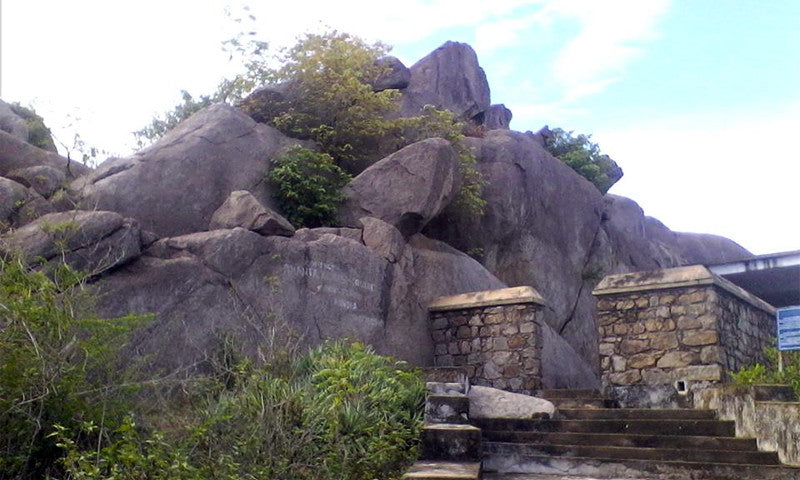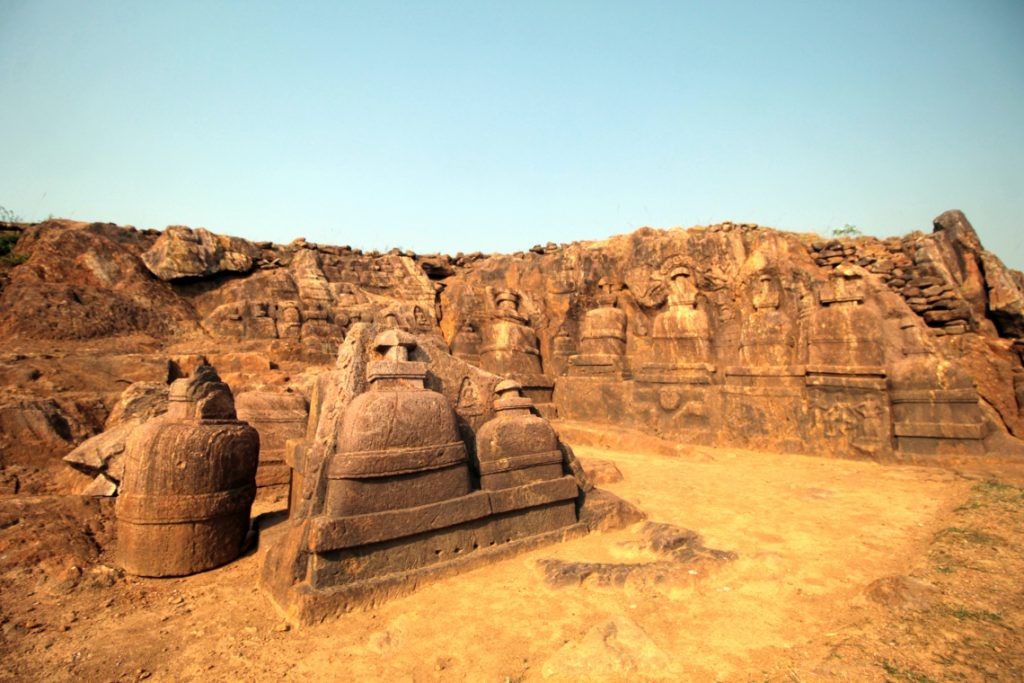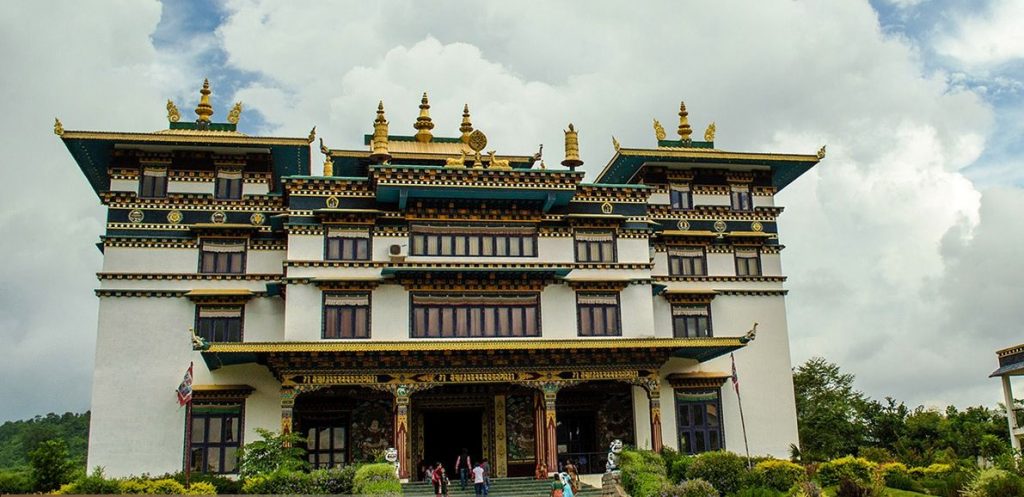Where Buddhism is talked about, Odisha’s name is certainly one of the leads. The Rich History of Buddhism in Odisha Having embraced the rich Buddhist heritage from the 6th century BC, Odisha has its share of the many Buddhist sites scattered across the length & breath. Moreover, there are some which not only have the largest concentration of Buddhist remains but are also a must-visit for instant enlightenment.
With recent developments, more than 200 Buddhist sites, scattered across the length and breadth of the state, were revealed by archeological excavations.
They show the prominence of Buddhism in Odisha from the 6th century BC to a minimum of the 15th-16th centuries AD, with the 8th-10th centuries being the time when it really prospered. Buddhist teachings from all sects (including Hinayana, Mahayana, Tantrayana, and offshoots like Vajrayana, Kalacakrayana, and Sahajayana) are believed to have been conducted in Odisha, giving the state a rich Buddhist heritage The Rich History of Buddhism in Odisha .
The largest concentration of Buddhist remains are often found at three sites — Ratnagiri, Udayagiri, and Lalitgiri — mentioned as the “Diamond Triangle”. The site contains a series of monasteries, temples, shrines, stupas, and exquisite sculptures of Buddhist images. The rural setting of the place, among fertile hills and beautiful paddy fields, is considered picturesque and peaceful.
Along with them we have a few other locations where Buddhism had reached and prospered like Dhauligiri, Chandragiri, Jaugada, Padmasambhava Mahavihara Monastery & Langudi.
Ratnagiri
Ratnagiri or Jewel Mountain is now an excavated area comprising two quadrangular monasteries, along with the remains of eight temples and about 300 minor stupas. The development of Buddhist art and architecture at Ratnagiri, whose ancient name was Ratnagiri Mahaviharaya Arya Viksu Sangha, materialized between 5th century AD and 13th century AD. The Rich History of Buddhism in Odisha Most of the sculptures found here date back to the 8th and 9th centuries. It was a section of the Puspagiri University, alongside Lalitgiri and Udayagiri.
Udaygiri
Udayagiri is the most picturesque out of all Buddhist inspired locations in Odisha. Located at the bottom of verdant rolling hills forming a semi circle, this site exemplifies the blissful and tranquil natural surroundings selected for the development of Buddhist monasteries in ancient India. It is a Buddhist complex in Odisha comprising major stupas The Rich History of Buddhism in Odisha and monasteries and is also famous for its Jain monuments.
Lalitgiri
Set amongst the valley of two rivers, Birupa and Chitrotpala, the monastery was discovered by a local British official in 1905. A variety of stone inscriptions, seals, sealing, and potsherds, were discovered front the site which proved that it flourished between the 2nd-3rd and 14-15th century AD. It is a popular tourist destination and pilgrimage site for its The Rich History of Buddhism in Odisha enormous brick monasteries.
Dhauligiri
Dhauli is also famous for its Shanti Stupa. It happens to be the place where the bloodiest of battles was fought and won by Emperor Ashoka. This monument marked his transformation from an ambitious king of a prospering kingdom to a disciple of The Rich History of Buddhism in Odisha and his teaching. The evidence of this transformation can be seen at Dhauli, 8 km from Bhubaneswar, in the form of a rock edict marked by the image of an elephant sculpted from the overhanging rock. Two such rock edicts still exist in The Rich History of Buddhism in Odisha .
Jaugada

Jaugada Hill in Ganjam District is a place where one of the famous rock edicts of emperor Ashoka is found . Jaugada was also an ancient fortified settlement that had boundary walls with four main gates each and is located 30 km away from Berhampur.
It is believed that Duryodhan built the fort, inside which there are five stone images worshipped within the temple of Gupteswar. It is believed the five images represent the five Pandavas.
Jaugada Hill, a region of the Malati Range of hills, features a large clean surface of granite where there’s an Ashokan edict that gives valuable information about the pattern of administration followed by the Kalingan emperor.
You can read our another post on Bali Yatra: The Celebration of Maritime Splendor
Langudi

Langudi hills are the remains of a Buddhist centre of learning that flourished till the 11th century & is located 90 km far from Bhubaneswar. This site is situated in Salipur village of Jajpur district. There are a series of 34 rock-cut Buddhist stupas and a number of other early medieval Buddhist monuments and shrines atop the hill. The most popular of those rock-cut stupas is the 7th century ‘Smaudra Mudra’ image of Lord Buddha.
Historians have said the hill also contains the remains of Pushpagiri University or Pushpagiri Mahavihara, a significant Buddhist centre of learning that flourished from 2nd century BC to 10th century AD.
The remains indicate that it had been a centre of the Hinayana, Mahayana and Vajrayana sects of Buddhism. The northern part of the hill houses the country’s oldest Ashoka stupa.
Padmasambhava Mahavihara Monastery

Padmasambhava Mahavihara monastery stands tall amidst the prolific surroundings in Jirang near Chandragiri of Gajapati district, & is reportedly the biggest in eastern India. The colony which houses the monastery is Buddha Vihar (the land of happiness and plenty) and the area is popularly known as a mini Tibet in Odisha. It is a section of the Rigon Thubten Mindolling monastery that was a part of the Tibetan settlement near Chandragiri. The monastery has been named after Acharya Padmasambhava, who was born in Odisha and was the one to spread Buddhism to Tibet in the 7th century.
Inaugurated by Dalai Lama in 2010, it has been built as per the ‘Atanpuri style of Nalanda’ and in the assembly hall, a 23-foot-high idol of Lord Buddha along with his two disciples have been installed. On the right side of the Buddha’s idol is a 1000-armed, 1000-eyed Avalokiteswar. While on the left, is a large idol of Guru Nangsi Zilnon.
The monastery is five-storied & has its interiors richly decorated with religious traditional paintings of Tibetan culture.The 70-feet-high monastery can house over 200 Lamas. Also, Jirang is considered as one of the earliest Tibetan resettlement areas in the country.
Aragarh
Aragarh or Airagarh, is an ancient Buddhist destination in Odisha, which is situated north of the river Daya in the Godiput-Matiapada panchayat under Delanga block.
Discovery of broken Buddhist icons made of igneous rock and carving of Naga Kanyas and Gaja Sinhas in the four pillars of the temple stand ample testimony of Buddhist memory. The site is said to have flourished between 1st-2nd BC and 10th-11th AD.
Muchalinda Monastery
Muchalinda’s history is traced back from Gupta Period. It is a Buddha Monastery in Odisha which is situated near the confluence of the Magar and Ang Rivers in Gaisilat Block, Padmapur Subdivision in Bargarh district. The famous statue of Muchalinda was discovered by an art historian, Charles Fabri in 1961.
This popular heritage site in Odisha once had a multi-storied structure.
During excavation here, two Buddha idols were also recovered on a small stone called mandapa. These idols included the statues of a Muchalinda Buddha and Buddha at Sarnath while giving the homily.
Conclusion
Buddhism is believed to have been known to the people of Orissa from the life time of Buddha itself i.e. sixth century BCE and continued with or without royal patronage up to its decline in the sixteenth century CE and subsequently survived under disguise or getting assimilated into the fold of Brahmanical Hinduism (Vaishnavism) in an incipient form. Although changed with time, the Buddhist structures of Odisha are considered architectural marvels.
If on a trip to Odisha, make sure to visit the above sites if you’re a connoisseur of History.

